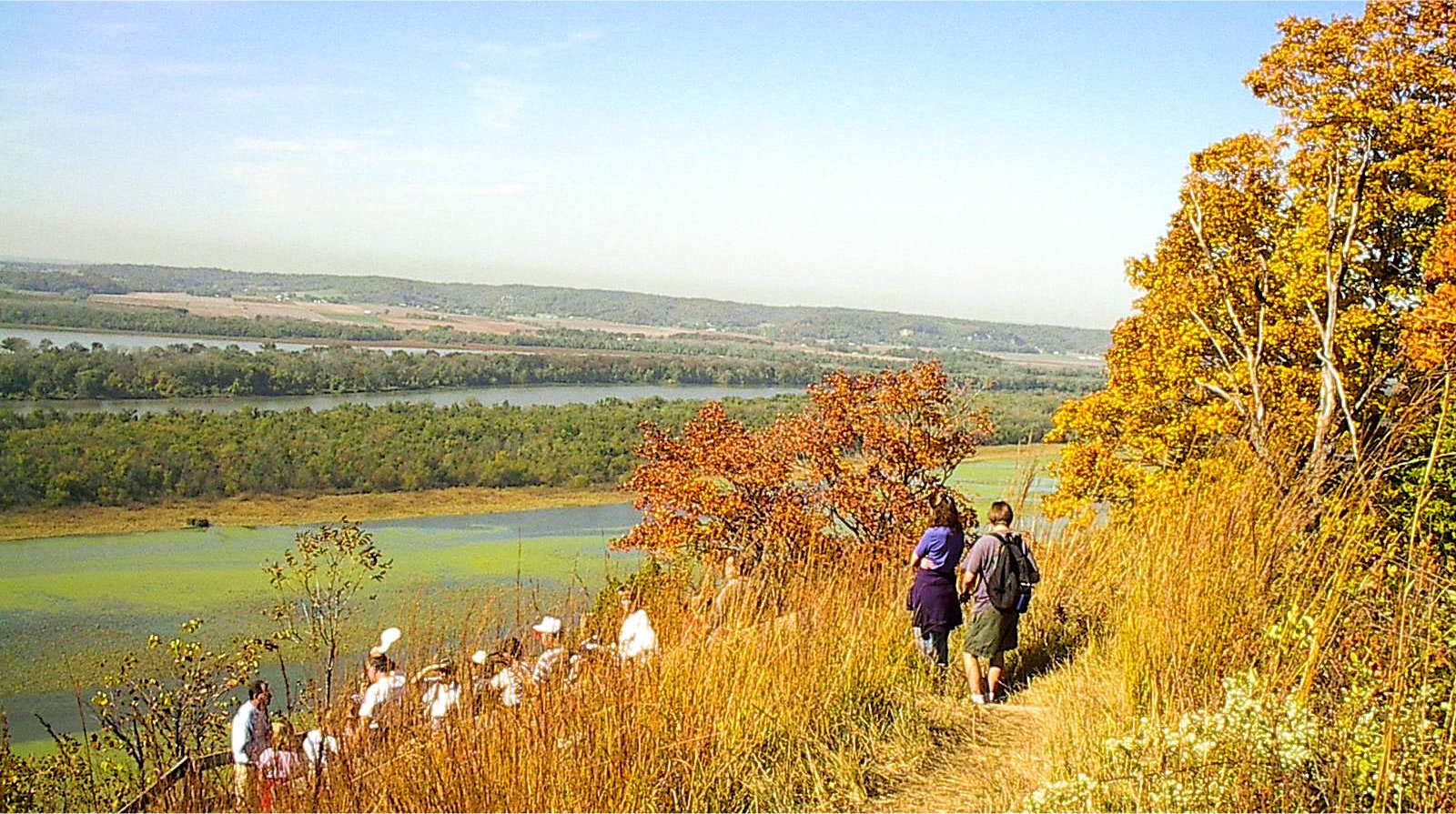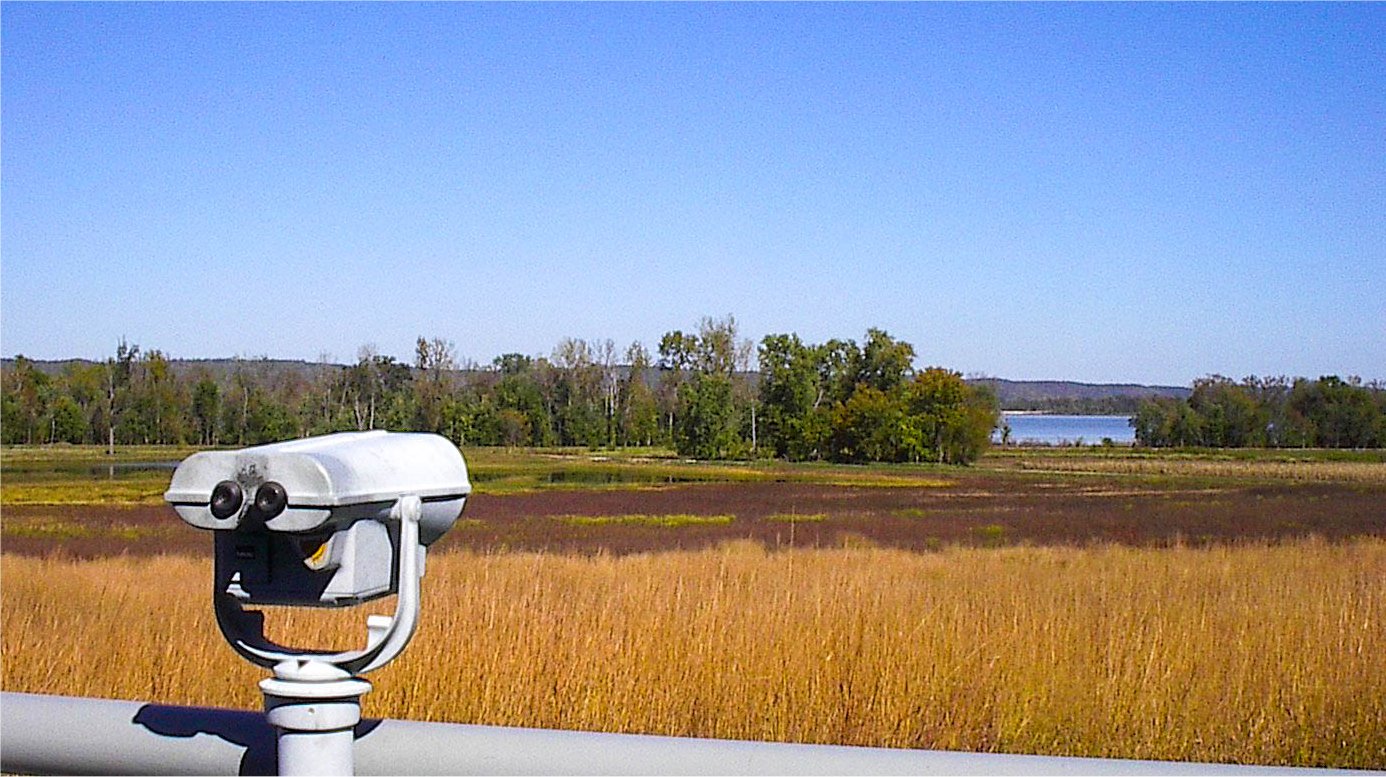On the Oak Trail, hikers can view the vertical loess (pronounced 'less') soil formations. Loess is a geologic term that refers to deposits of silt that have been laid down by wind action called aeolian activity by geologists.
Loess deposits were formed in areas bordering glaciers. Large volumes of meltwater flowed from the edges of these glaciers during the summer carrying sediments formed by the glacier moving over bedrock. When the weather became colder, the glaciers stopped melting, exposing huge mud flats. Strong winds sorted the exposed sediments and swept the finer materials from the flood plain into huge clouds of dust. When the winds slowed, the silt would blanket the area. The bluffs and hills in the Pere Marquette area are all covered with loess deposits.
The Oak Trail connects with the Hickory Trail.












